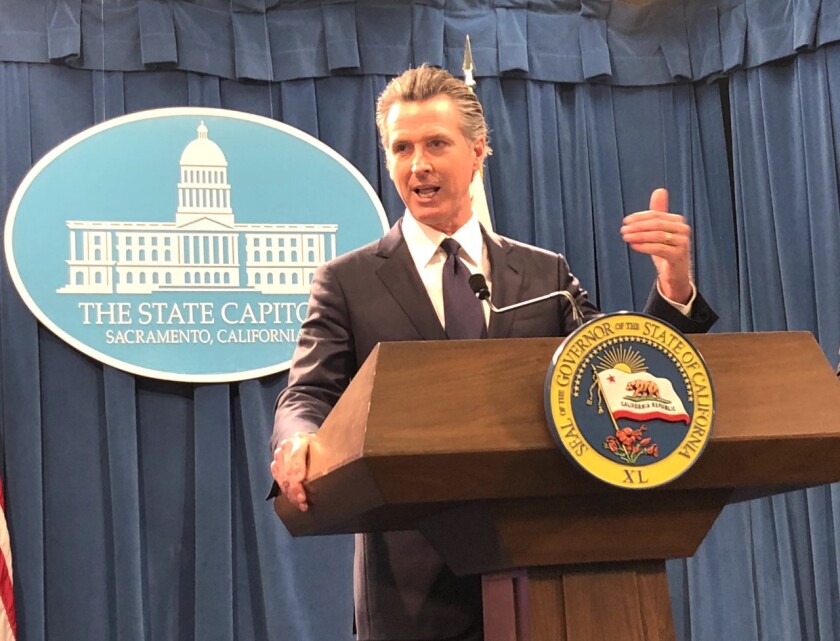
Due, of course, to the ongoing novel coronavirus (COVID-19) pandemic, it’s not good news. Among other reversals of fortune, an operational surplus of around $21.5 billion has given way to a projected overall $53.4 billion shortfall. But, Newsom said, in delivering the bad news and the $203 billion proposed budget: “We’re entering into this time of uncertainty in a much better place than we entered into it in 2003 or 2009 or 2011” – referring to the state’s financial position in early 2020. His original proposed budget, released Jan. 10, was $222.2 billion and that earlier position provides considerable buoyancy on these rough economic seas.
Meanwhile, Newsom’s regard for technology and innovation likely underpins several areas where IT projects are recommended to continue or expand. Among the takeaways:
• A fresh mindset and a closer look at telework: The pandemic has “disrupted state government operations,” forcing officials to get creative to deliver core services. But it has also “created an opportunity to rethink the way the state delivers services,” according to the budget summary, which noted: “Investments in technology have already advanced the ability of government to deliver services during the current pandemic, and the state is committed to building on this progress to make California an example of what government should look like in the 21st century.” The state’s response, per the budget, has proven large-scale teleworking is possible – and optimizing that, could reduce its carbon footprint and leased office space while “increasing the state's digital presence for the benefit of both California's employees and the people they serve.” The administration and the California Government Operations Agency will work with agencies and departments to determine which classifications or positions can “telework without disruption” to service, budget authors wrote, noting the potential of telework to reducing absenteeism, boosting employee retention and moving California toward being “an employer of choice.”
• Iterating on earlier work: The budget summary highlights the California Department of Motor Vehicles’ work to improve and enhance online services, including its Virtual Field Office, indicating: “The state will build on DMV’s successful pilot program and look to implement similar digital-based services in other agencies or departments that provide a direct service to the public.”
The Newsom administration, which Wednesday appointed a director for its new Office of Digital Innovation, will use that agency to “assist agencies and departments to rethink how to meet the public's needs, including by delivering more government services online”; and the state will capitalize on lessons learned by standing up the new covid19.ca.gov website to build a new CA.gov website. (The latter was the subject of the alpha.ca.gov project that ran from December to March.) The new site, said the budget, will be user-centered to let residents do “simple, easily understood transactions” and find “all state information at a single portal.”
• Wildfire Innovation Procurement Sprint: The state will provide an increase of $4.4 million from the General Fund – $7.6 million in ongoing funds – to let the California Department of Forestry and Fire Protection (Cal Fire) implement wildfire prediction and modeling technology that was procured through the Innovation Procurement Sprint process begun last year with Executive Order N-04-19. (That may refer to a proof-of-concept with vendor Technosylva.)
The contract, recently executed, will let Cal Fire “access a wildfire predictive software program that can perform hundreds of millions of simulations daily, over large geographic areas, and generate predictions and wildfire forecasts based on simulated or reported ignition points” statewide, per the summary. Data from the program will be used to inform “fire pre-positioning and suppression tactical operations.”
• Benefit Systems Modernization Project: The revised budget preserves $46 million to continue the Benefit Systems Modernization Project at the California Employment Development Department (EDD). The project will “modernize and consolidate EDD’s unemployment insurance (UI), disability insurance and paid family leave benefit systems."
“The state of this legacy system and the need to replace it has come into sharp focus during the COVID-19 pandemic as millions of Californians have accessed the system to apply for UI benefits,” according to the summary. As of Saturday, EDD had approved roughly 4.4 million UI claims totaling more than $12.2 billion in benefits.
• California Earthquake Early Warning Program: The state would “maintain $17.3 million to operate this new innovative program that uses science, monitoring and technology to alert” residents, businesses and transit agencies to earthquakes through devices like cellphones. The revised budget would switch funding for this program from the General Fund to the School Land Bank Fund.




